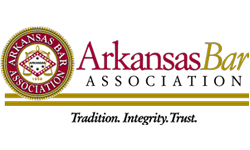Whether we’re flying our own personal aircraft or stepping onto a plane headed for a new destination, the risks of air travel probably aren’t at the forefront of our minds. When we think about traveling risks, we’re most likely thinking about auto accidents – which are more statistically common. Aviation accidents, however, do happen and they can be catastrophic.
In the event of an aviation accident, injuries and property damage are almost always sustained. Fatalities can also occur. As demand for air travel continues to rise, so does the risk that passengers will be involved in an aviation accident.
If you find yourself the victim of an aviation accident, it’s important to know your rights. A Little Rock aviation accident lawyer at McMath Woods P.A. can help you understand the applicable laws and reach your goals. In order to start that process, it’s important to understand the ins and outs of air travel and aviation accidents.
General Aviation Versus Commercial Aviation
In order to successfully plead your case, it’s important to understand what type of aircraft you were in at the time of your accident, as the laws and regulations can vary. Aviation is typically divided into three categories: general, commercial, and military. Keep in mind the three categories can cross, depending on the circumstances.
General aviation aircraft hold fewer than 30 people and are used for personal travel. Most general aviation activities include work with agriculture, aerial development, construction, flight training, observation and patrols, photography, search and rescue, and sightseeing.
It is considered easier to become a general aviation pilot, as you only have to be 17 to receive your license and only 40 hours of training are required for a single engine aircraft. A tarmac is not required for flying a general aviation aircraft. Because of how expensive they are to fly, helicopters typically fall under general aviation.
Commercial aviation involves aircraft that can carry more than 30 people. These planes depart from large, tarmac airports and are held to higher safety standards than general aviation aircraft. When a person is paying to fly, they are using commercial aviation. To become a commercial pilot, an individual must have 1500 hours of flying time to receive a license and be at least 23 years old. Commercial aircraft are subject to air taxi regulations and airline rules.
Military aviation falls under its own category and is regulated by the Federal Aviation Administration.
Now that you understand the differences in air travel options, let’s take a look at some aviation accident statistics.
Aviation Accident Statistics
The following facts are compiled from reports by the National Transportation Safety Board and the Aircraft Owners and Pilots Association.
- Of the 600,000 Unites States’ pilots, more than 500,000 fly general aviation aircraft.
- 65 percent of general aviation flights are flown for businesses and public services that need more flexibility than an airline service can offer.
- On average, there are seven accidents for every 100,000 general aviation flyer hours.
- Loss of control during a flight accounts for the largest number of aviation accident fatalities.
- In 2015, there were 73 commercial aviation accidents, resulting in 28 deaths.
- In 2015, there were 1,210 general aviation accidents, resulting in 406 deaths.
As mentioned above, inflight control loss is one of the main causes of aviation accidents; however, the risks do not stop there.
Common Causes of Aviation Accidents
While aviation accidents can happen for a variety of reasons, most can be related back to the weather, pilot errors, and mechanical malfunctions.
Atmospheric Accidents
Atmosphere accidents are often caused by inclement weather. Heavy snow may impact an aircraft’s take off, and ice accumulation can disrupt how a plane’s wings function. Heavy fog can cause collisions. Heavy rain and winds have the potential to cause turbulence that decreases the control the pilot should have over the aircraft.
Pilot Error Accidents
Pilot error accidents occur when an action or inaction made by the pilot of an aircraft causes an accident. These errors are often related to illness, stress, medication, substance abuse, or fatigue.
Mechanical Malfunction Accidents
Mechanical malfunctions are often caused by improper maintenance or an issue caused by the manufacturer. These malfunctions can cause aircraft to lose engine power during take-off or mid-flight.
If you find yourself overwhelmed after an aviation accident and unsure of how to hold the irresponsible party account for their actions, you may want to consider seeking legal guidance from a reputable law firm.
Recovering with Our Aviation Accident Lawyers in Arkansas
Due to the federal and international rules and regulations on air travel, aviation accident claims can get incredibly complicated. Independent investigators, the National Transportation Safety Board, and aircraft manufacturers are likely to be involved in the case. It may be found that multiple parties are at fault for the accident, and all should be held accountable.
It’s imperative for a law firm who undertakes aircraft related personal injury litigation to understand how aircraft work, as well as have knowledge on the ever-changing laws. Our Little Rock aviation accident attorneys have the experience needed to successfully represent the victim of an airplane accident accident.
If you or a loved one have been injured or worse in an aviation accident, contact the attorneys at McMath Woods P.A. today. We’re dedicated to helping you and your loved ones hold the negligent party responsible for your accident, so you can focus on your recovery.








